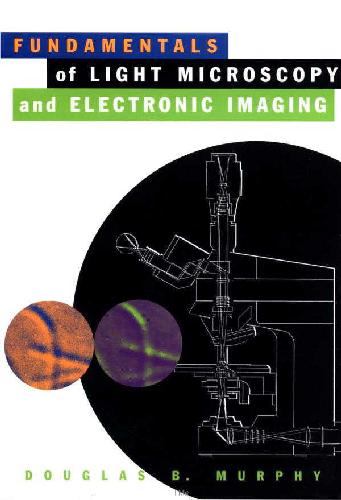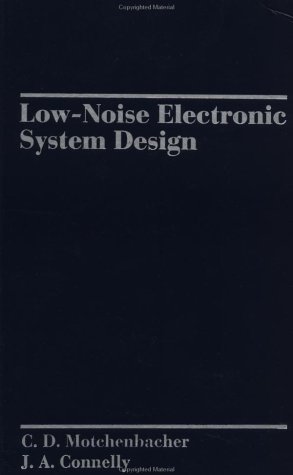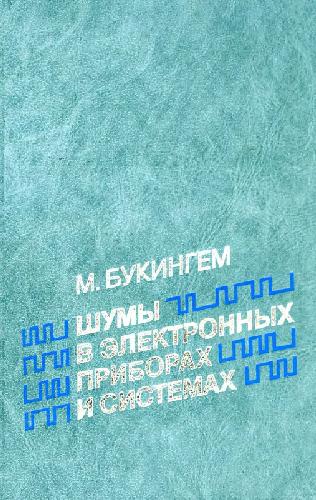D.B. Murphy0-471-25391-X
Table of contents :
Cover Page……Page 1
Title Page……Page 4
Copyright © 2001 by Wiley-Liss, Inc…….Page 5
3. ILLUMINATORS, FILTERS, AND ISOLATION OF SPECIFIC WAVELENGTHS……Page 6
6. DIFFRACTION AND SPATIAL RESOLUTION……Page 7
10. DIFFERENTIAL INTERFERENCE CONTRAST (DIC) MICROSCOPY AND MODULATION CONTRAST MICROSCOPY……Page 8
13. VIDEO MICROSCOPY……Page 9
16. IMAGE PROCESSING FOR SCIENTIFIC PUBLICATION……Page 10
Index……Page 11
Preface……Page 12
Optical Components of the Light Microscope……Page 14
Note: Inverted Microscope Designs……Page 16
Aperture and Image Planes in a Focused, Adjusted Microscope……Page 17
Koehler Illumination……Page 19
Note: Summary of Steps for Koehler Illumination……Page 20
Precautions for Handling Optical Equipment……Page 24
Exercise: Calibration of Magnification……Page 25
Light As a Probe of Matter……Page 28
Light as Particles and Waves……Page 31
The Quality of Light……Page 33
Properties of Light Perceived by the Eye……Page 34
Physical Basis for Visual Perception and Color……Page 35
Positive and Negative Colors……Page 37
Exercise: Complementary colors……Page 39
Illuminators and Their Spectra……Page 42
Demonstration: Spectra of Common Light Sources……Page 46
Illuminator Alignment and Bulb Replacement……Page 47
Demonstration: Aligning a 100 W Mercury Arc Lamp in an Epi-Illuminator……Page 48
“First on-Last Off”: Essential Rule for Arc Lamp Power Supplies……Page 49
Filters for Adjusting the Intensity and Wavelength of Illumination……Page 50
Neutral Density Filters……Page 51
Interference Filters……Page 52
Effects of Light on Living Cells……Page 54
Image Formation by a Simple Lens……Page 56
Note: Real and Virtual Images……Page 58
Object-Image Math……Page 59
The Principal Aberrations of Lenses……Page 63
Designs and Specifications of Objective Lenses……Page 66
Markings on the Barrel of a Lens……Page 67
Image Brightness……Page 68
Oculars……Page 69
Microscope Slides and Coverslips……Page 70
The Care and Cleaning of Optics……Page 71
Exercise: Constructing and Testing an Optical Bench Microscope……Page 72
Defining Diffraction and Interference……Page 74
The Diffraction Image of a Point Source of Light……Page 77
Demonstration: Viewing the Airy Disk with a Pinhole Aperture……Page 79
Constancy of Optical Path Length Between the Object and the Image……Page 81
Effect of Aperture Angle on Diffraction Spot Size……Page 82
Diffraction by a Grating and Calculation of Its Line Spacing, D……Page 84
Demonstration: The Diffraction Grating……Page 88
Abbe’s Theory for Image Formation in the Microscope……Page 90
Diffraction Pattern Formation in the Back Aperture of the Objective Lens……Page 93
Demonstration: Observing the Diffraction Image in the Back Focal Plane of a Lens…….Page 94
Preservation of Coherence: an Essential Requirement for Image Formation……Page 95
Exercise: Diffraction by Microscope Specimens……Page 97
Numerical Aperture……Page 98
Spatial Resolution……Page 100
Depth of Field and Depth of Focus……Page 103
Optimizing the Microscope Image: A Compromise Between Spatial Resolution and Contrast……Page 104
Exercise: Resolution of Striae in Diatoms……Page 106
Phase Contrast Microscopy……Page 110
The Behavior of Waves from Phase Objects in Bright-Field Microscopy……Page 112
The Optical Design of the Phase Contrast Microscope……Page 116
Interpretating the Phase Contrast Image……Page 119
Exercise: Determination of the Intracellular Concentration of Hemoglobin in Erythrocytes by Phase Immersion Refractometry……Page 123
Theory and Optics……Page 125
Image Interpretation……Page 128
Exercise: Dark-Field Microscopy……Page 129
The Generation of Polarized Light……Page 130
Demonstration: Producing Polarized Light with a Polaroid Filter……Page 132
Vectorial Analysis of Polarized Light Using a Dichroic Filter……Page 134
Double Refraction in Crystals……Page 137
Demonstration: Double Refraction by a Calcite Crystal……Page 139
Kinds of Birefringence……Page 140
Propagation of O and E Wavefronts in a Birefringent Crystal……Page 141
Birefringence in Biological Specimens……Page 143
Generation of Elliptically Polarized Light by Birefringent Specimens……Page 144
Overview……Page 148
Optics of the Polarizing Microscope……Page 149
Adjusting the Polarizing Microscope……Page 151
Principles of Action of Retardation Plates and Three Popular Compensators……Page 152
Demonstration: Making a Plate from a Piece of Cellophane……Page 156
Exercise: Determination of Molecular Organization in Biological Structures Using a Full Wave Plate Compensator……Page 161
The DIC Optical System……Page 166
DIC Equipment and Optics……Page 168
The DIC Prism……Page 170
Demonstration: The Action of a Wollaston Prism in Polarized Light……Page 171
Formation of the DIC Image……Page 172
Interference Between O and E Wavefronts and the Application of Bias Retardation……Page 173
Alignment of DIC Components……Page 174
Image Interpretation……Page 179
The Use of Compensators in DIC Microscopy……Page 180
Modulation Contrast Microscopy……Page 181
Contrast Methods Using Oblique Illumination……Page 182
Alignment of the Modulation Contrast Microscope……Page 185
Exercise: DIC Microscopy……Page 186
Overview……Page 190
Applications of Fluorescence Microscopy……Page 191
Physical Basis of Fluorescence……Page 192
Properties of Fluorescent Dyes……Page 195
Demonstration: Fluorescence of Chlorophyll and Fluorescein……Page 196
Autofluorescence of Endogenous Molecules……Page 198
Arrangement of Filters and the Epi-illuminator in the Fluorescence Microscope……Page 202
Objective Lenses and Spatial Resolution in Fluorescence Microscopy……Page 207
Causes of High-Fluorescence Background……Page 209
The Problem of Bleed-Through with Multiply Stained Specimens……Page 210
Examining Fluorescent Molecules in Living Cells……Page 211
Exercise: Fluorescence Microscopy of Living Tissue Culture Cells……Page 212
Overview……Page 218
The Optical Principle of Confocal Imaging……Page 221
Demonstration: Isolation of Focal Plane Signals with a Confocal Pinhole……Page 224
Advantages of CLSM Over Wide-Field Fluorescence Systems……Page 226
Criteria Defining Image Quality and the Performance of an Electronic Imaging System……Page 228
Electronic Adjustments and Considerations for Confocal Fluorescence Imaging……Page 230
Photobleaching……Page 236
General Procedure for Acquiring a Confocal Image……Page 237
Two-Photon and Multi-Photon Laser Scanning Microscopy……Page 239
Confocal Imaging with a Spinning Nipkow Disk……Page 242
Exercise: Effect of Confocal Variables on Image Quality……Page 243
Applications and Specimens Suitable for Video……Page 246
Configuration of a Video Camera System……Page 247
Types of Video Cameras……Page 249
Electronic Camera Controls……Page 251
Demonstration: Procedure for Adjusting the Light Intensity of the Video Camera and TV Monitor……Page 254
Video Enhancement of Image Contrast……Page 255
Criteria Used to Define Video Imaging Performance……Page 258
Aliasing……Page 261
Digital Image Processors……Page 262
Image Intensifiers……Page 263
VCRs……Page 264
Systems Analysis of a Video Imaging System……Page 265
Daisy Chaining a Number of Signal-Handling Devices……Page 267
Exercise: Contrast Adjustment and Time-Lapse Recording with a Video Camera……Page 268
Overview……Page 272
The Charge-Coupled Device (CCD Imager)……Page 273
CCD Architectures……Page 280
Note: Interline CCDs for Biomedical Imaging……Page 281
Camera Acquisition Parameters Affecting CCD Readout and Image Quality……Page 282
Imaging Performance of a CCD Detector……Page 284
Requirements and Demands of Digital CCD Imaging……Page 289
Color Cameras……Page 290
Points to Consider When Choosing a Camera……Page 291
Exercise: Evaluating the Performance of a CCD Camera……Page 292
Overview……Page 296
Preliminaries: Image Display and Data Types……Page 297
Histogram Adjustment……Page 298
Adjusting Gamma (y) to Create Exponential LUTs……Page 300
Flat-Field Correction……Page 302
Image Processing with Filters……Page 305
Signal-to-Noise Ratio……Page 312
Exercise: Flat-Field Correction and Determination of S/N Ratio……Page 318
Image Processing: One Variable Out of Many Affecting the Appearance of the Microscope Image……Page 320
Record Keeping During Image Acquisition and Processing……Page 322
Note: Guidelines for Image Acquisition and Processing……Page 323
Use of Color in Prints and Image Displays……Page 325
Colocalization of Two Signals Using Pseudocolor……Page 326
A Checklist for Evaluating Image Quality……Page 328
Answer Key to Problem Sets……Page 330
Materials for Demonstrations and Exercises……Page 334
Sources of Materials for Demonstrations and Exercises……Page 342
Glossary……Page 344
References……Page 370
A,B……Page 374
D……Page 375
F……Page 376
G,H,I……Page 377
O……Page 378
Q,R……Page 379
T……Page 380
U,V,W,X,Z……Page 381
4.1……Page 382
4.2……Page 383
9.1……Page 384
11.1……Page 385
Back Cover……Page 386







Reviews
There are no reviews yet.